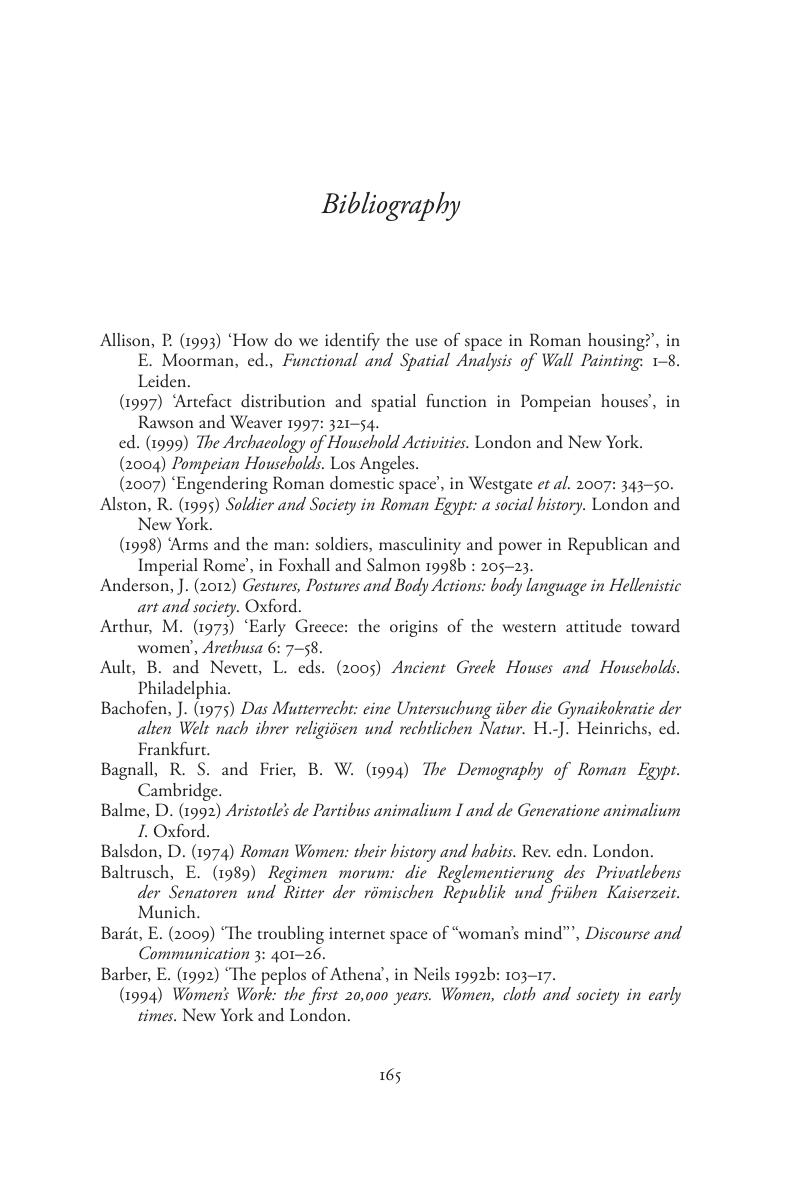Book contents
- Frontmatter
- Contents
- List of Illustrations
- List of Tables
- Acknowledgements
- Chapter 1 Gender and the study of classical antiquity
- Chapter 2 Households
- Chapter 3 Demography
- Chapter 4 Bodies
- Chapter 5 Wealth
- Chapter 6 Space
- Chapter 7 Religion
- Chapter 8 Conclusions
- Bibliographic essay
- Bibliography
- Index
- References
Bibliography
Published online by Cambridge University Press: 05 May 2013
- Frontmatter
- Contents
- List of Illustrations
- List of Tables
- Acknowledgements
- Chapter 1 Gender and the study of classical antiquity
- Chapter 2 Households
- Chapter 3 Demography
- Chapter 4 Bodies
- Chapter 5 Wealth
- Chapter 6 Space
- Chapter 7 Religion
- Chapter 8 Conclusions
- Bibliographic essay
- Bibliography
- Index
- References
Summary

- Type
- Chapter
- Information
- Studying Gender in Classical Antiquity , pp. 165 - 184Publisher: Cambridge University PressPrint publication year: 2013



